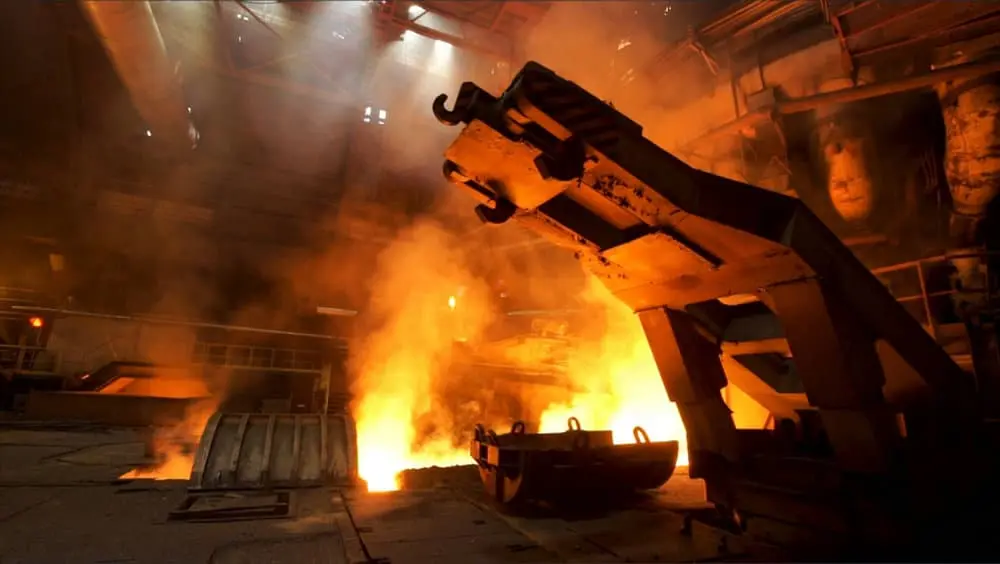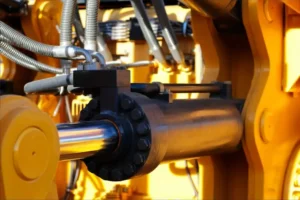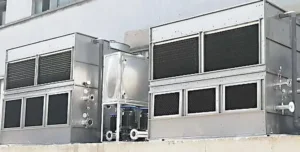
Плавильная печь — это специализированная печь, используемая для плавки различных руд., прежде всего железная руда, производить стальные и нерухозные металлы. Ниже приведены некоторые общие типы печей плавилей и их конкретные функции.
Доменная печь
Приложение: Широко используется для грубого плавки металлов, таких как медь, вести, свинцовый, и сурьма.
Структура: Состоит из топа печи, Корпус печи, Главная кровать (или горло), Печь цилиндра, и устройство Tuyere.
Функция: Сплошные материалы, включая заряд плавки (концентрироваться, спеченная руда), кокс, поток, и контр-материалы добавляются сверху. Воздух высокого давления взорван в Tuyere, инициируя плавление, окисление, снижение, и химические реакции, когда материалы движутся вверх. Жидкий металл, матовый, и шлак сбрасываются с дна печи, В то время как газы и оксиды металлов вытесняются через верхнюю часть.
Калдо печь
Псевдоним: Кислородный косой вдутый конвертер.
Функции: Наклонение и вращающаяся корпус печи усиливает контакт между жидким металлом и шлаком, Повышение эффективности реакции.
Рефрактерные коэффициенты повреждения: Подобно печи ISA (Аусмельтная печь).
Кислородное дно выдувание выводы для вывода свинца
Структура: Горизонтальный цилиндрический реактор, предназначенный для эффективного плавки свинца.
Упалование печи
Приложение: Роторная печь, используемая для лечения шлака выщелачивания и восстановления ценных металлов, таких как Zn, Пб, В, и Ge..
Функции: Температура в прерывистой реакционной зоне может достигать 1300–1500 ℃.
Флеш -печь
Приложение: Основное оборудование для флэш-плавки в необработанных металлических процессах.
Функции: Высокая эффективность производства и низкое энергопотребление, с высокой концентрацией SO₂ в дымовом газе.
Структура: Состоит из реакционной башни, Седиментационный резервуар, Вертикальный дымоход, и сопло.
Функция: Высушенная порошкообразная концентрат смешивается с горячим воздухом или кислородом в сопло и вводится на высокой скорости (60–70 м/с) в реакционную башню, где процессы плавки быстро происходят (в течение 2–3 секунд). Полученное расплавленное сульфид и оксид падает в резервуарный бак для дальнейшей обработки.
Электрическая печь
Приложение: Используется для плавки, обогрев, и термообработка стали, Ферроагульи, и нерухозные металлы.
Классификация: Включает в себя печи сопротивления, индукционные печи, дуговые печи, Плазменные печи, и электронные лучевые печи.
Функция: Электрические печи необходимы для сушки, обжарить, переработка, плавление, изоляция, и обработка шлака при плавке из нерехового металла.
- Индукционная печь: Использует эффект индукционного нагрева, Идеально подходит для нагрева и таяния стали, медь, алюминий, и цинк. Он имеет быстрый нагрев и низкую потерю материала, сделать его подходящим для автоматических производственных линий.
- Дуговая печь: Использует дуговые тепловые эффекты для плавления; это может быть классифицировано на косвенные, прямой, и погруженные дуговые печи.
- Вакуум Дуговая печь: Специализируется на таяние реактивные и рефрактерные металлы, такие как титан, молибден, и ниобиум.
- Плазма Печь: Использует ионизированный рабочий газ для создания плазмы для нагрева или плавления материалов.
В итоге, Различные типы плавильных печей используются в металлическом плавите, каждый из них разработан с определенными структурами, принципы, и приложения. Выбор соответствующей плавильной печи требует тщательного рассмотрения типа металла, масштаб производства, потребление энергии, и воздействие на окружающую среду.







